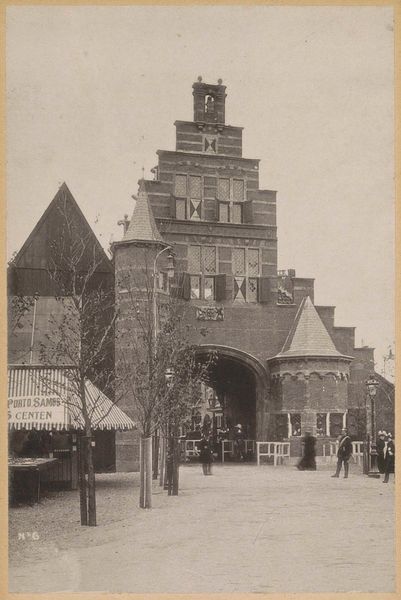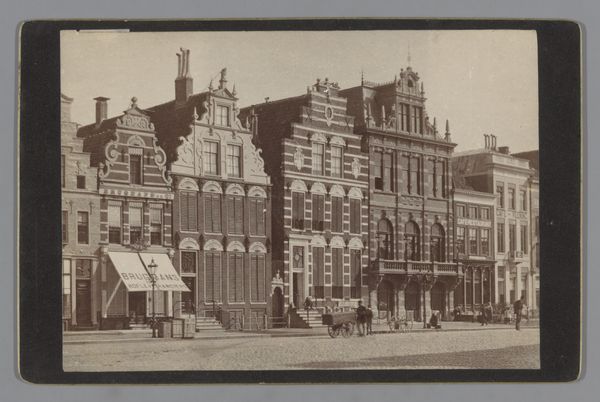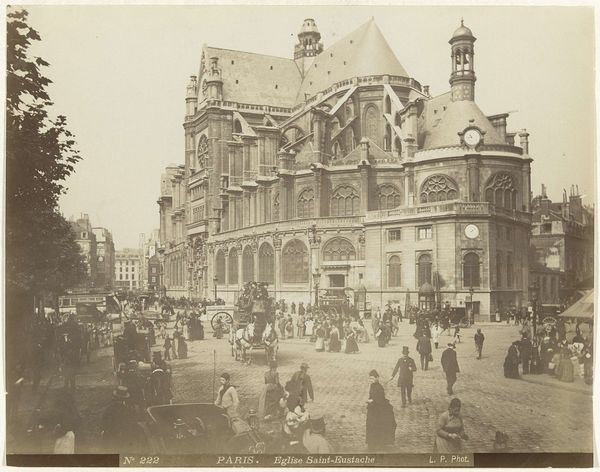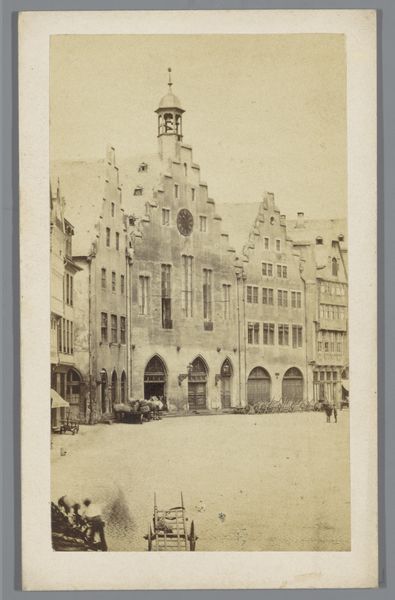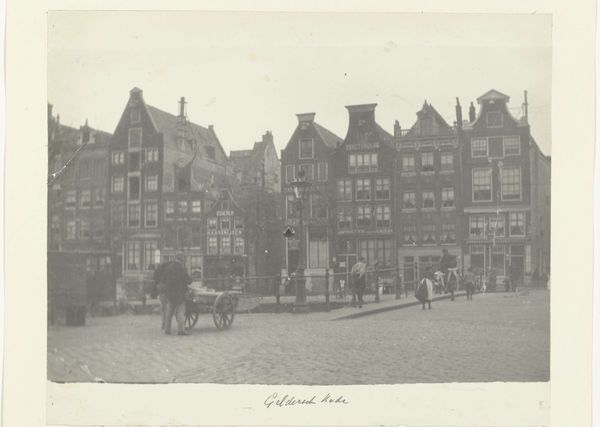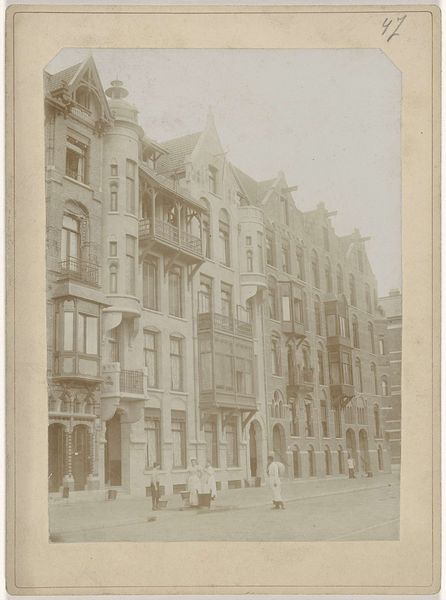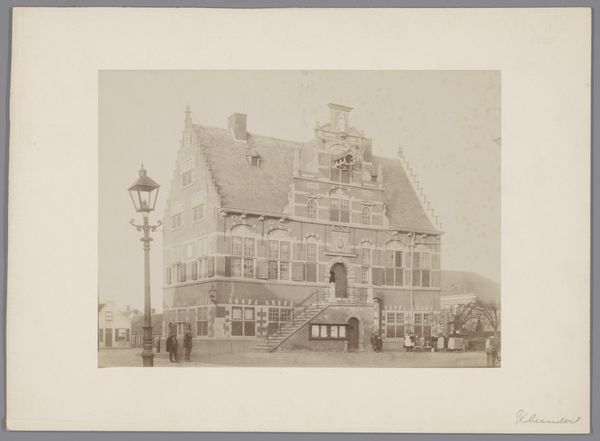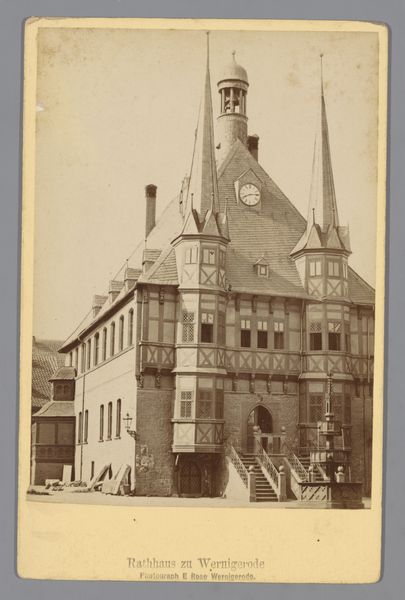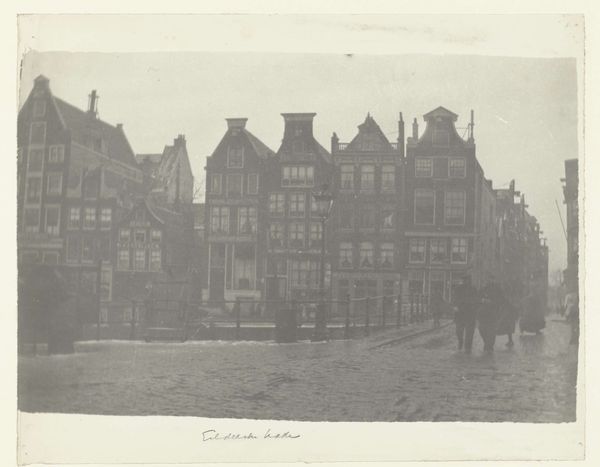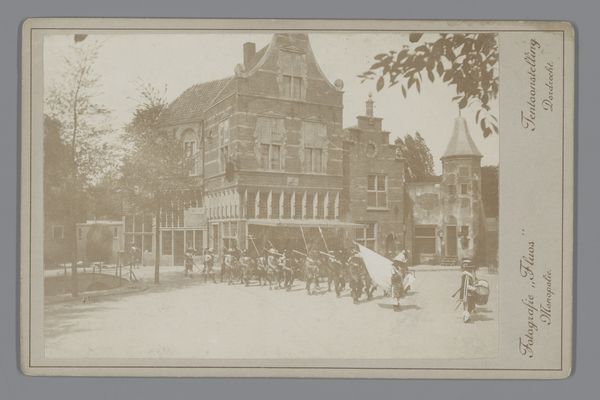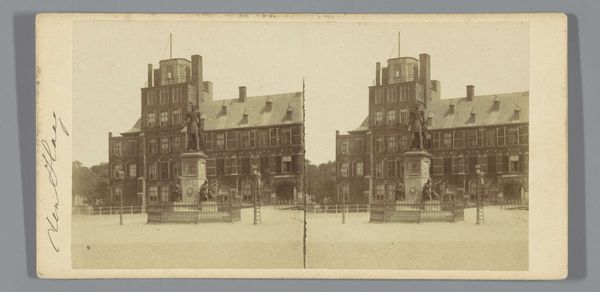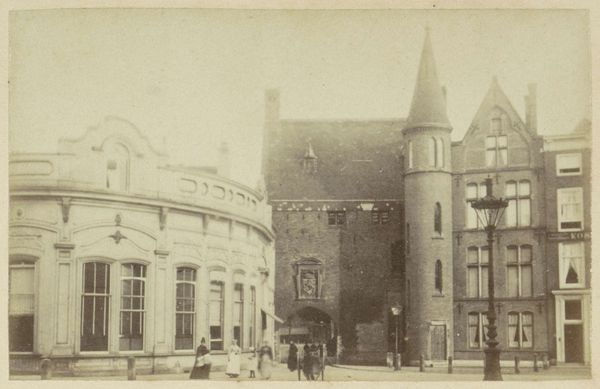
Replica's van oud-Hollandse gevels tijdens de Wereldtentoonstelling voor het Hotel- en Reiswezen op het Museumplein in 1895 1895
0:00
0:00
guydecoralco
Rijksmuseum
photography, architecture
#
16_19th-century
#
pictorialism
#
photography
#
pencil drawing
#
cityscape
#
architecture
Dimensions: height 90 mm, width 157 mm
Copyright: Rijks Museum: Open Domain
Curator: This striking photographic print from 1895 depicts replicas of old Dutch facades built for the World Exposition for Hotels and Tourism, which took place on the Museumplein. Editor: The mood is certainly theatrical, but in a subdued, almost melancholy way. Despite the gathering of people, there's a stillness, a sense of suspended time in this image, reinforced by the sepia tones. Curator: Precisely. What is interesting is how the constructed environment offers a romanticized version of the Dutch past. Consider the historical context: the late 19th century witnessed burgeoning tourism and a keen interest in national identity. These facades speak to the desire for a picturesque, curated experience of history. Editor: Absolutely. The facades themselves present a fascinating medley of recognizable archetypes – those stepped gables, the medieval crenellations…They conjure up the Golden Age, but removed from their original socioeconomic conditions. It feels like an arranged display. What’s telling about that impulse for reconstruction? Curator: The impulse towards historical reenactment— towards the performative aspect of history. Note how individuals in the image engage with these settings as living theater: posing, promenading, essentially becoming part of this orchestrated tableau. The facades, presented in one cohesive image, allowed fair-goers to imagine a constructed unity during a time when nationalism and globalism were very active. Editor: This really evokes the concept of a Potemkin village. The photograph itself is incredibly evocative. But seeing that the city and its buildings is now merely a display for a performance begs the question of authenticity, of genuine belonging. This space only comes into existence for a relatively short performance of that kind of traditional Dutch belonging, a fleeting image on the landscape that can easily disappear after its usefulness is fulfilled. Curator: The ephemeral nature, of course, also speaks to questions of value: what aspects of history do we commemorate, and for whom? As it disappears, we're only left with the photograph, creating new problems of memory. What story do we chose to share, and from what standpoint? Editor: In that way, the artifice creates new symbolism— a potent and fascinating symbol that is an excellent case study on the nature of identity construction and the market place. Curator: A great reminder that what looks like heritage might well be something constructed for consumption, now more relevant than ever in discussions about gentrification and authenticity in urban landscapes. Editor: I'll definitely view the Museumplein with slightly altered perspectives from now on.
Comments
No comments
Be the first to comment and join the conversation on the ultimate creative platform.
